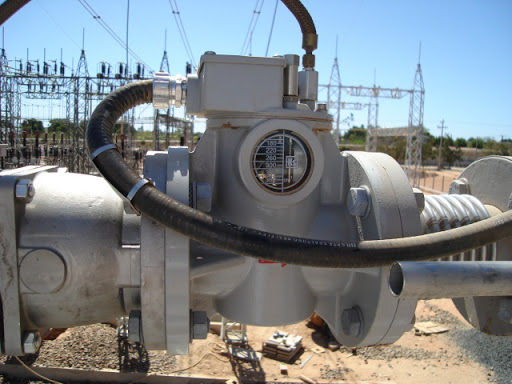Buchholz Relay Construction and Working
Buchholz Relay Construction and Working
What is Buchholz relay?
The Buchholz relay prevents the transformer from internal defects. This is the relay of the gas actuated. The Buchholz relay is situated between the main tank and the conservator. This kind of relay is used in a transformer with a rating greater than 500KVA. It is not used in small transformers because of economic concerns.
Working Principle of Buchholz relay
When the fault occurs inside the transformer, the oil temperature increases. In the form of a gas, the oil evaporates. The production of the gas depends on the extent of the fault that happens within the transformer. Internal failure occurs in the transformer, either because of the insulation breakdown between the winding or because the initial contact is bad. The fault induces the arc which increases the temperature of the gas. The oil becomes evaporated and moves upwards. The Buchholz relay detects the failure and gives the alarm to the personnel. The transformer is disconnected from the main supply for maintenance.
Construction of Buchholz Relay
The Buchholz relay has two hinges which are placed in the metallic chamber. This metallic chamber is connected through the pipe between the conservator and main tank.
The one of the hinges is placed in the upper portion of the metallic chamber along with the mercury switch. This mercury switch is used for activating the alarm. The other float is placed in the lower portion of the metallic chamber along with the mercury switch. The mercury switch is used for actuating the tripping circuit.
Operation of Buchholz Relay
The internal fault of the transformer induces the arc inside the main tank. The oil of the transformer starts heating because of the thermal effect. The gas moves upwards, and few of their vapours are collected in the upwards area of the main tank. Because of the evaporation, the level of oil inside the transformer tank starts decreasing.
The mercury switch placed inside the metallic chamber becomes tripped, and the relay gives the alarm to the personnel. The supply of the transformer becomes close, and it is disconnected to the system for maintenance. The relay has a test cock which is used for releasing the pressure of the chamber.
When the severe fault occurs inside the transformer, the lower mercury switch placed inside the metallic chamber becomes slightly tilted because of which the tripping circuit becomes closed. Thus, the transformer is disconnected from the main circuit.
Principle of operation of a Buchholz relay
Faults that occur inside an oil-filled transformer generates heat, much enough to decompose the insulating oil. Decomposition of oil produces gases such as hydrogen, carbon monoxide, methane etc. These gases gradually move towards the conservator through the connecting pipe, but a part of which gets trapped inside the Buchholz relay. The trapped gases displace oil inside the relay. Hence the level of oil in it falls, activating the float switches inside.
Limitations of Buchholz Relay
The following are the disadvantages of the Buchholz relay.
- The relay is used only in oil immersed transformers.
- It can only detect the fault below oil level.
- This relay does not protect the connecting cables. Hence separate protection is used for the cables.
- The response time of the relay is high.

